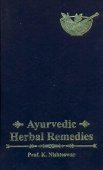Snehopaga, Sneha-upaga: 2 definitions
Introduction:
Snehopaga means something in Hinduism, Sanskrit. If you want to know the exact meaning, history, etymology or English translation of this term then check out the descriptions on this page. Add your comment or reference to a book if you want to contribute to this summary article.
In Hinduism
Ayurveda (science of life)
Source: Wisdom Library: Āyurveda and botanySnehopaga (स्नेहोपग) is the Sanskrit name for a group of medicinal plants, classified as “emollients”, and originally composed by Caraka in his Carakasaṃhitā sūtrasthāna IV. The name is derived from the words sneha, translating to “oil” or “fat”, and upaga, translating to “belonging to”. It is a technical term used throughout Āyurveda. Examples of plants pertaining to this category include Mṛdvīkā (Raisin), Vidāri (Convolvulus paniculata), Jīvantī (Coelogyne ovalis) and Śālaparṇī (Hedysarum gangetieum). The collection of herbs named Snehopaga is one of the fifty Mahākaṣāya.
Source: gurumukhi.ru: Ayurveda glossary of termsSnehopaga (स्नेहोपग):—Substances used to facilitate snehan (oleation

Āyurveda (आयुर्वेद, ayurveda) is a branch of Indian science dealing with medicine, herbalism, taxology, anatomy, surgery, alchemy and related topics. Traditional practice of Āyurveda in ancient India dates back to at least the first millenium BC. Literature is commonly written in Sanskrit using various poetic metres.
See also (Relevant definitions)
Partial matches: Sneha, Upaga.
Query error!
Full-text: Mahakashaya.
Relevant text
Search found 5 books and stories containing Snehopaga, Sneha-upaga; (plurals include: Snehopagas, upagas). You can also click to the full overview containing English textual excerpts. Below are direct links for the most relevant articles:
International Ayurvedic Medical Journal
A critical review of logic behind use of asthapanopaga gana in various niruha bastis < [2017, Issue XI November,]
Medhya dravya in ayurveda a critical review < [2013, Issue 3 May-June]
Efficacy of madhuka taila nasya and japaakusuma lepa in akaalapal-itya-a single case study < [2023, Issue 07, July]
World Journal of Pharmaceutical Research
A review on management of manyastambha with mashabaladi tail nasya < [2021: Volume 10, June special issue 7]
Understanding the mechanism of vamanopaga gana medicines < [2022: Volume 11, January issue 1]
Yashtimadhu (glycyrrhiza glabra linn) < [2018: Volume 7, June issue 11]
AYU (Journal of Research in Ayurveda)
Phyto-chemical evaluation of dried aqueous extract of Jivanti [Leptadenia reticulata (Retz.) Wt. et Arn] < [Volume 33 (4); 2012 (Oct-Dec)]
An appraisal of the bioavailability enhancers in Ayurveda in the light of recent pharmacological advances < [Volume 37 (1); 2016 (Jan-Mar)]
Journal of Ayurveda and Holistic Medicine
A review of pharmacological action of vishaghna dravyas from charakokt mahakashay in drug-induced nephrotoxicity w.s.r. to garavishajanya shotha < [Volume 7, issue 2 (2019)]
Phytochemical evaluation of churna of vidari (pueraria tuberosa, roxb.) < [Volume 2, issue 5 (2014)]
Pharmacological action of vishaghna dravyas from charakokta mahakashaya in drug induced hepatotoxicity w.s.r. to garavishjanya shotha – a review < [Volume 7, issue 2 (2019)]
Review of yashtimadhu on mental health w.s.r to medhya rasayana < [Volume 6, Issue 4: July - August 2019]
KESHYA KARMA OF YASHTIMADHU (GLYCYRRHIZA GLABRA Linn): A COMPREHENSIVE REVIEW < [Volume 4, issue 5: September- October 2017]
Meda, key astavarga member, faces identification and standardization issues. < [Volume 7, Issue 4: July - August 2020]
Related products
